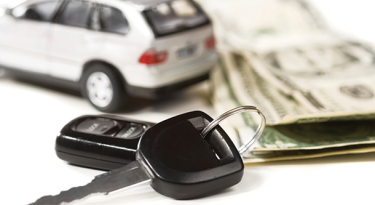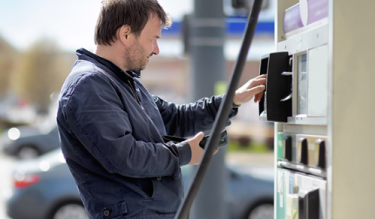

Welcome to Bumper to Bumper Radio!
Drive in anxious and cruise out confident with the best automotive information for your vehicle! Tune in to KTAR News 92.3 every Saturday from 11 a.m. to noon as Matt Allen helps listeners with their car problems. The show call in number is 602-277-5827.
Latest News From Bumper to Bumper Radio

Volvo Sedan earns top spot among 50 vehicles reviewed
ORLANDO, Fla. (June 18, 2020) – AAA announced a 2020 Volvo luxury sedan has earned the top score in its first edition of the newly released AAA Car Guide, a consumer resource on the latest and greatest in vehicle technology. The guide provides consumers with reviews based in part on how many advanced driver assistance systems (ADAS) are included in the vehicle as well as a number of other criteria. The majority of the category winners for 2020 are either electric, plug-in electric hybrids or hybrids, signaling that eco-friendly vehicles tend to offer the most cutting-edge vehicle technology.
The 175-page guide includes comprehensive, easy-to-read reviews of each vehicle which are based on 13 criteria, including braking, fuel economy, emissions, handling, ride comfort, acceleration and the number of ADAS safety features. These vehicles are tested, scored and placed in one of five vehicle categories by the Automotive Research Center (ARC) of the Automobile Club of Southern California, a member of the AAA federation of motor clubs.
“With an increasing number of vehicles equipped with advanced safety features, we thought consumers would benefit from an in-depth review of how they stack up with other driving criteria,” said Greg Brannon, AAA’s director of Automotive Engineering and Industry Relations. “Previous AAA studies have shown that many drivers don’t understand some of the features in their new vehicles and believe they can do more than is technically possible.”

New research shows crash-involved drivers admit to risky driving behaviors
WASHINGTON, D.C. (June 11, 2020) – The AAA Foundation for Traffic Safety’s latest research finds drivers who have been in at least one crash in the past two years are significantly more likely to engage in risky behaviors like speeding or texting, even when they think the police may catch them. After three months of staying at home, AAA urges drivers to keep everyone safe on the roads and warns motorists against falling back into dangerous driving habits.
“The frequency of drivers in the United States engaging in improper behavior is too high. While drivers acknowledge that certain activities behind the wheel – like texting, are dangerous, some do them anyway,” said Dr. David Yang, Executive Director of the AAA Foundation for Traffic Safety. “We need to be aware of the serious consequences of engaging in these types of dangerous driving behavior and change course.”
The Foundation’s annual Traffic Safety Culture Index (TSCI), which highlights the gap between drivers’ attitudes and their reported behaviors, found that drivers perceive distracted, aggressive and impaired driving as dangerous. Yet many of them admit to engaging in at least one of these exact behaviors in the 30 days before the survey. The numbers were even higher for those involved in a recent crash:

For 66 days, the national gas price average held below the $2/gallon mark, pushing as cheap as $1.76. In the past week, the average has inched up to $2.03. Despite the consistent increases at the pump, prices are still significantly cheaper year-over-year. In fact, during the first week of June the past five years, gas prices have typically averaged $2.81.
“The beginning of June has not seen gas prices this low since 2004,” said Jeanette Casselano, AAA spokesperson. “As crude oil prices trend higher and gasoline demand increases, Americans will see gas prices push more expensive, but this summer will be cheaper than last.”
U.S. gasoline demand continues to show increasing strength. The Energy Information Administration’s (EIA) latest reading shows a 4% weekly increase at 7.5 million b/d. That is the highest demand level since states began issuing stay-at-home orders in mid-March.
Quick Stats
The nation’s top 10 largest weekly increases: Colorado (+13 cents), Indiana (+12 cents), Missouri (+11 cents), Montana (+10 cents), Kentucky (+10 cents), Michigan (+9 cents), Kansas (+9 cents), Alabama (+8 cents), Tennessee (+8 cents) and Alaska (+8 cents).
The nation’s top 10 least expensive markets: Mississippi ($1.66), Texas ($1.69), Louisiana ($1.70), Arkansas ($1.71), Alabama ($1.72), Oklahoma ($1.73), South Carolina ($1.73), Missouri ($1.76), Kansas ($1.77) and Virginia ($1.79).
West Coast
Pump prices in the West Coast region also continue to increase, which contributes to those state averages remaining the most expensive in the country. Alaska (+8 cents) saw the largest increases in the region and is last on today’s top 10 largest weekly increases list. Hawaii ($3.17) and California ($2.95) remain the most expensive markets in the country. Washington ($2.58), Nevada ($2.50), Oregon ($2.49), Alaska ($2.33) and Arizona ($2.21) follow.
According to EIA’s latest weekly report, total gas stocks in the region increased from 29.2 million bbl to 29.8 million bbl last week. Increasing stocks, alongside increasing demand, may help to slow pump price increases this week in the region.

Whether you have a trusted repair shop that you always do business with, or you’re looking for a new one, it’s important to know the right questions to ask your mechanic. After all, car repairs can be expensive. And, you likely want to keep your vehicle for a few years. Asking the right questions when it’s time for auto repairs can help you get the best price, ensure quality service, and help you make informed decisions.
Price-Related Auto Repair Questions
Like most other things in life, you get what you pay for when it comes to auto repairs. Cheap is not always best. That’s not to say that you can’t get a fair price for auto repairs, however. And, learning about prices and fees before your mechanic gets started will help prevent surprises later. Here are a few cost-related questions to ask your mechanic:
Do you charge a fee for diagnostic testing or repair estimates?
Not every auto repair shop offers free diagnosis and estimates, and that’s okay. But, you want to know up front exactly what those fees are and how they’re structured. If there is a fee, is it flat rate or per hour? On the other hand, if it’s free, what exactly is included and are there any conditions?
Are your auto repair estimates in writing?
When possible, it’s always a good idea to get a quote in writing – for auto repairs, or for anything else. This eliminates issues of “but, he said it would be this much…” when different staff members are involved in your service experience.
What kind of warranty do you offer?
Ideally, you want to choose a mechanic and auto repair shop that stands behind their work. The national average warranty is 24 months or 24,000 miles on services. At Good Works Auto Repair, we are so confident in the quality of our work that we offer an industry leading warranty of 60 months/60,000 miles on parts and labor for major repairs. That’s just one way we guarantee you get quality service at a great price!

WASHINGTON (May 27, 2020) – Nationwide, more than 8,300 people died in crashes involving teen drivers from 2008 to 2018 during the “100 Deadliest Days,” the period between Memorial Day and Labor Day. That’s more than seven people a day each summer. The combination of schools closed, activities curtailed, summer jobs canceled, and COVID-19 restrictions being lifted, could prove deadly as teens take to the road this summer. AAA recommends that now is a good time for parents to both model safe driving behaviors and help ensure their teens practice them too.
“The last decade of crash data show shows that teens continue to be over-represented in crashes and summertime marks an increase of fatal crashes for this age group,” said Dr. David Yang, Executive Director of the AAA Foundation for Traffic Safety. “Our data analysis has found that for every mile driven, new teen drivers ages 16-17 years old are three times more likely to be involved in a deadly crash compared to adults.”
Due to their inexperience, teen drivers are at a higher risk of crashes. According to the new AAA Foundation Traffic Safety Culture Index, about 72% of teen drivers aged 16-18 admitted to having engaged in at least one of the following risky behaviors in the past 30 days:




















